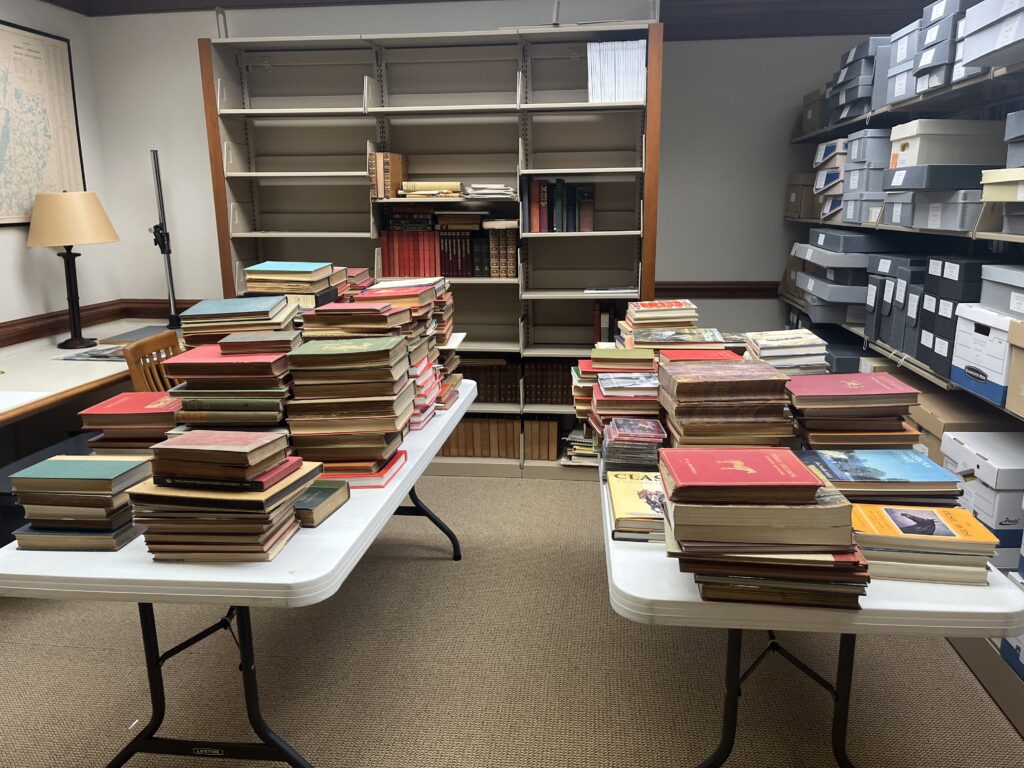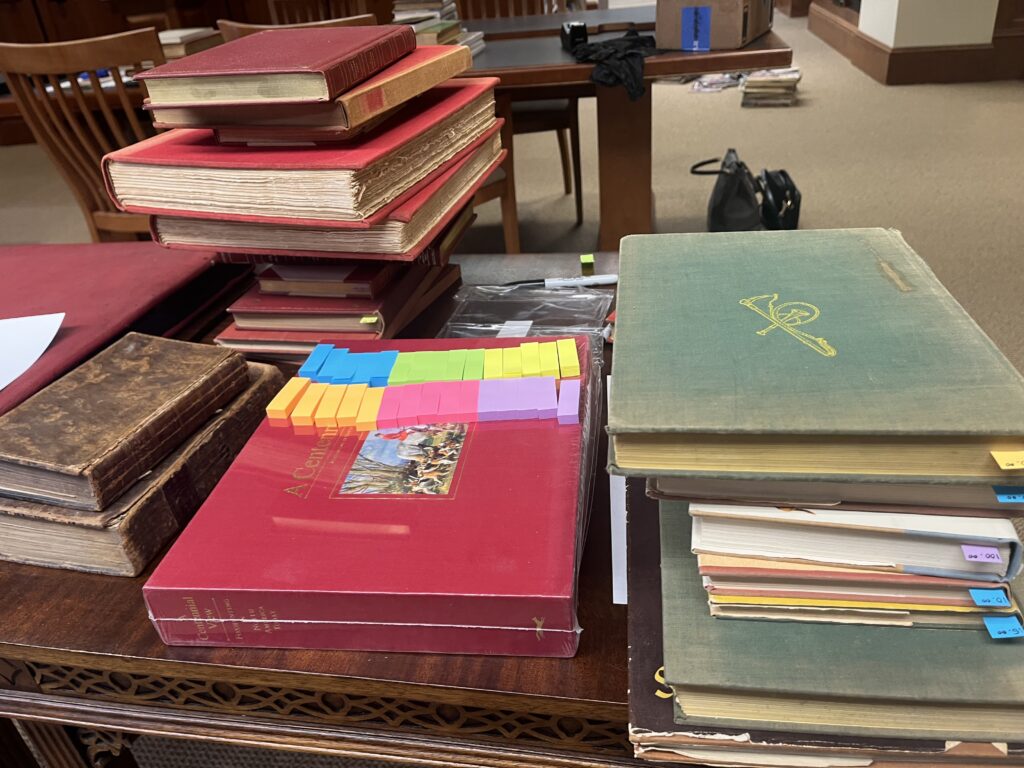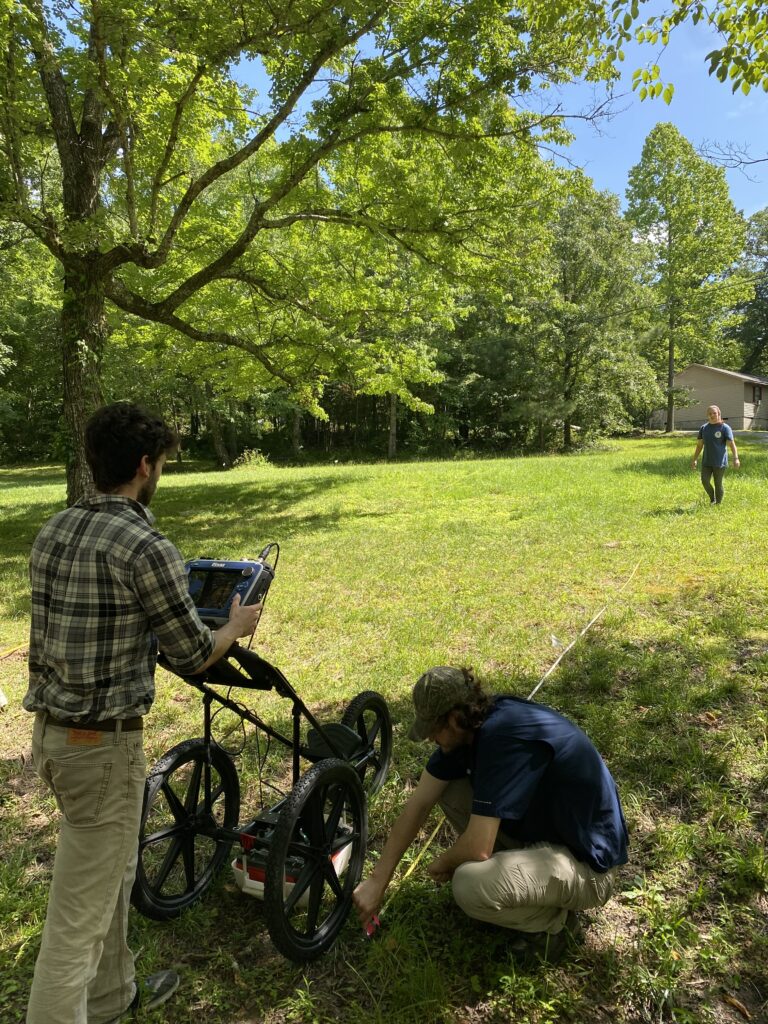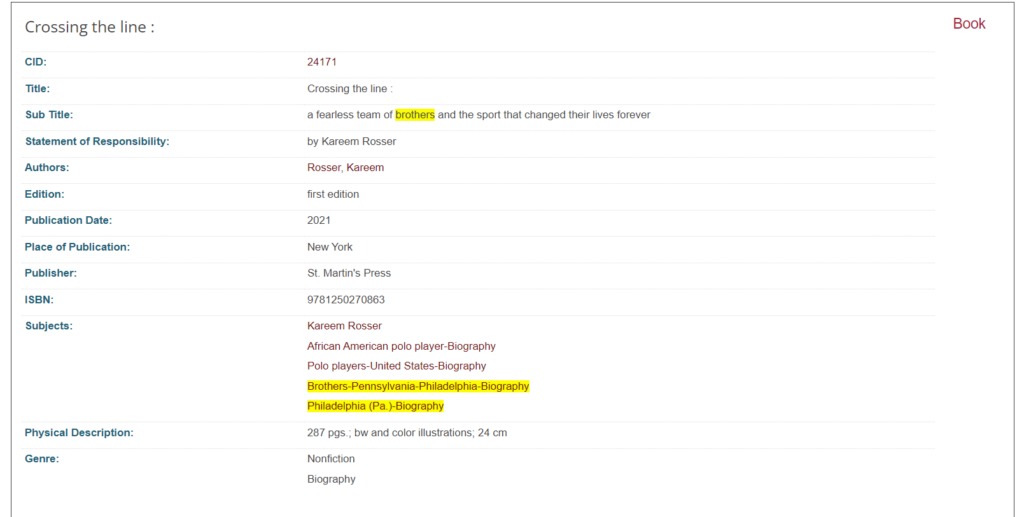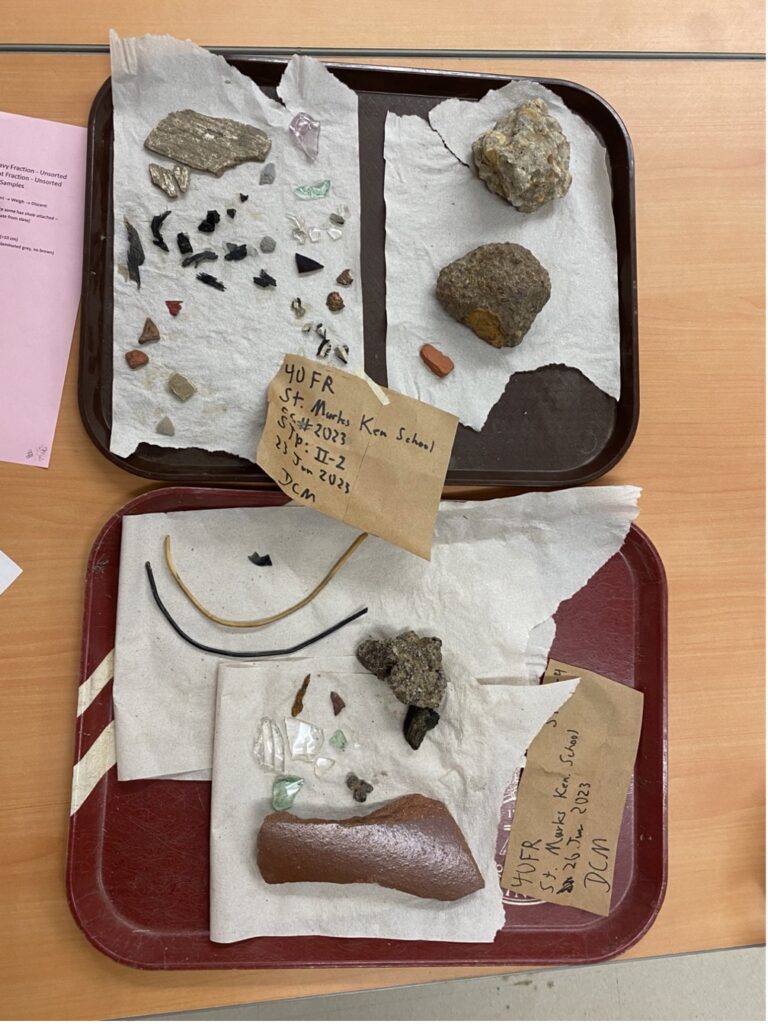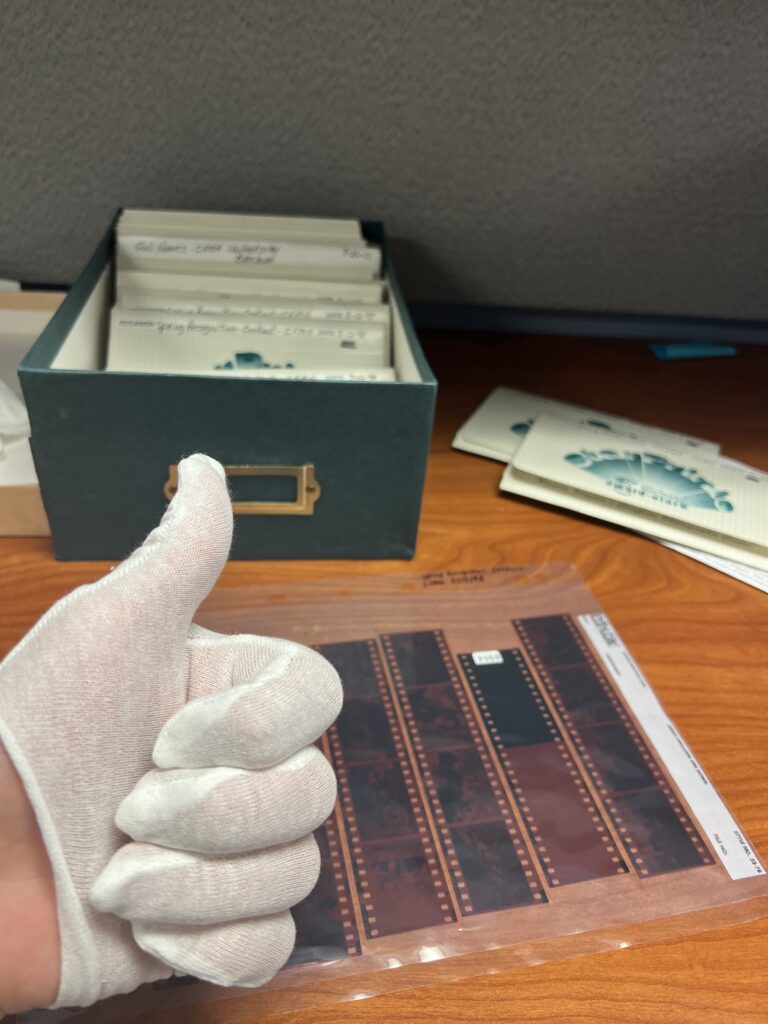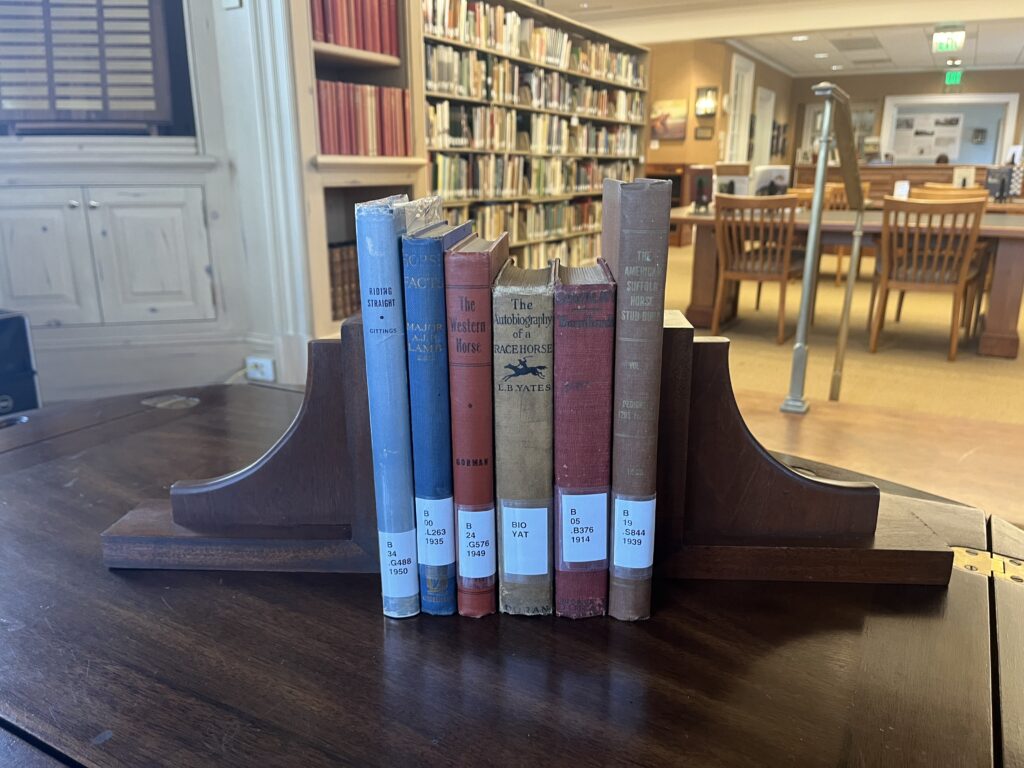
Photo by Lindsay Blanchfield. “Cataloged Books.” At the National Sporting Library & Museum, Middleburg, Virginia. July 13, 2023.
In the last week of my internship, I learned how librarians purchase and search for new books to add to their collections. My job was to look through a book, like an encyclopedia, with all of the Derrydale Press published books. Derrydale Press was a big publishing company in the early 19th century that ended in the 1930s during the Great Depression. This was a time before books became mass-produced. My job was to type out every book and its dates on a Word document, so we could go through the record later when seeing what books we needed to add to the collection. Then, I had to go through the National Sporting Library Museum online catalog to see if we had the book and then go back to the document and put an X either on yes or no. I had to thoroughly review the catalog to ensure that even though we had the book, I would ensure we had the first edition. The library always wants the earliest version of the book.
Later that week, I had to do a similar process to what I did with the Derrydal Press, but this time I went through “American Fishing Book.” This book had many fishing books that have been published and organized alphabetically. This time I did not have to create a Word document; I was allowed to write either a checkmark or a circle representing a zero in the book. I still had to use the library’s online catalog to see if we had the book. The most challenging thing I had to overcome was that as I was going through the book, I realized that some authors under their names would have more than one book that I had to look up in the system.
I also got to help work on the finishing touches of the display for the fly fishing festival. This required me to print out the book labels that would go with the books on display that had already been picked out and played on the proper page to represent fly fishing in the display. Then I had to get some clear rapping tape to ensure the page stayed open to the right page and blocks to prop up the books. Lastly, I had to make sure that everything was straight and everything was in its proper place.
